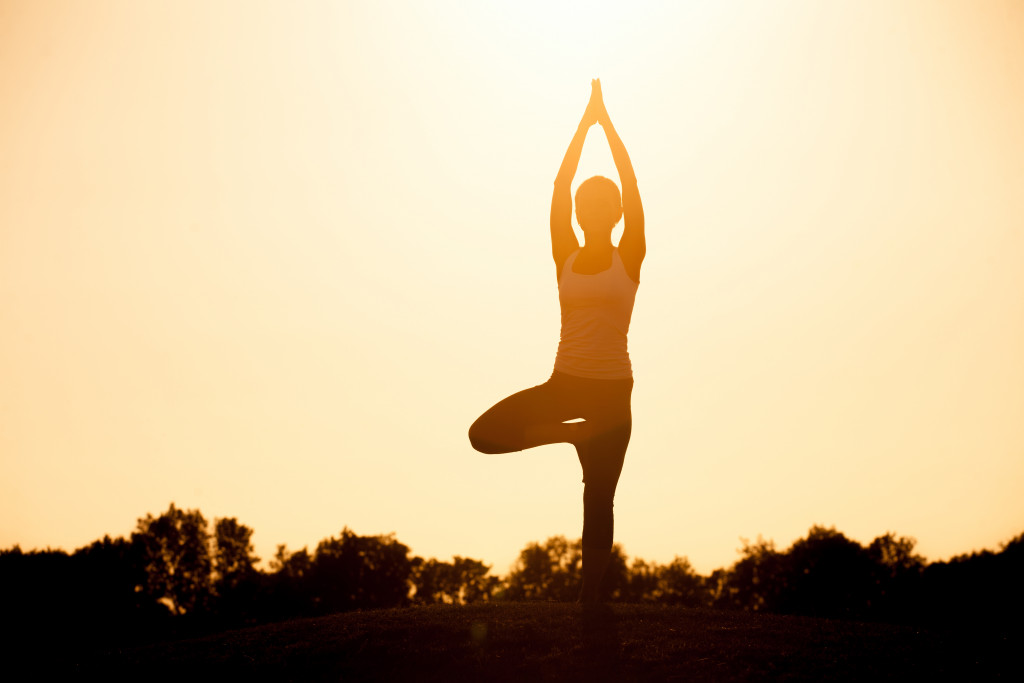Fitness plays a vital role in promoting physical and mental health. Physical inactivity is the fourth leading risk factor for mortality globally and is linked to millions of deaths yearly, according to World Health Organization (WHO) research. Not only that, but regular exercise also helps reduce the risk of cardiovascular disease, diabetes, obesity, and many other chronic diseases.
As a result, people invest heavily in their fitness routines, often through yoga. A study by the American Council on Exercise found that yoga is the fifth most popular workout among adults in the US. The popularity of yoga lies in its ability to help people find a balance between their body and mind, leading to improved physical and mental health.
The meditative and physical aspects of yoga can help you reduce stress, increase your flexibility and strength, and improve your overall health. However, the life of a yogi can be a challenge. It takes a lot of patience and dedication to turn yoga into a lifestyle, but it is possible. Still, you might want to consider a few steps before taking the plunge.
Start Slowly
Beginning a yoga practice can be intimidating, especially if you don’t know the basics. While yoga’s physical and mental benefits are well established, taking your time settling into this lifestyle is crucial to get the most out of it. When starting, try to find an introductory class with an experienced instructor who can help guide you as you learn and understand each movement. Even if you don’t understand everything immediately, keep practicing—it takes time and effort to become comfortable with each pose and maneuver.
The postures you learn in class will help build strength, flexibility, coordination, balance, and endurance. Take your time learning each move, so your body becomes familiar with the movements—this will help reduce the risk of injury while allowing progress. Learn proper breathing techniques to unlock the power of each pose further and maximize its effects. Focusing on breath control can also be used as a form of meditation that helps ground us during stressful moments.
Listening to your body when doing yoga is essential—pushing yourself too hard can quickly lead to injury or burnout. Instead, focus on getting comfortable with each pose before moving on to more challenging variations. It’s also helpful to remember that progress isn’t linear; there may be days when certain poses seem more difficult than usual, and that’s completely normal—just come back with a new perspective and try again! With patience and perseverance, yoga can become integral to your everyday routine, leading to improved physical health and balanced mental well-being.
Make It a Habit
Making yoga a regular part of your lifestyle requires consistency and dedication. To help create a routine, try to practice at the same time each day if possible. This can be especially helpful if you’re starting yoga and trying to establish a habit. Setting up a dedicated home practice space or joining an online class that meets regularly can also help motivate you to stick with it.
Creating achievable goals for each session is another way to stay on track. For example, rather than trying to do each pose perfectly, focus on gradually improving your posture and flexibility by setting tangible goals like mastering one new pose every week or practicing five days per week for 30 minutes each day. Keeping track of these objectives can give you something to strive for during each session, keeping you motivated and committed to yoga.
Turn Yoga into a Career

If yoga has become an integral part of your life, you may want to consider turning it into a career. There are many opportunities for yogis to make a living from teaching classes or providing private instruction. To get certified, look for programs offered by yoga organizations like the Yoga Alliance or Yoga International. You can also research into a 300-hour yoga teacher training program to help you learn more about your teaching career. Once approved, you can begin teaching classes, hosting workshops and immersions, developing online content, and working with other teachers in the industry.
Although it takes effort and dedication to turn yoga into a lifestyle, the rewards are countless. With time and patience, anyone can reap this ancient practice’s physical and mental benefits—so why not try it? Who knows where your journey as a yogi might take you!
Final Thoughts
Yoga is an ancient practice with endless possibilities for physical, mental, and spiritual growth. By turning yoga into a lifestyle, you can gain invaluable insights into your body and mind while developing a solid connection to yourself. Be sure to take your time settling into this lifestyle—start slow, focus on proper breathing techniques, listen to your body, and set achievable goals. Finally, if you feel up to it, consider leaping into teaching—it’s a great way to share the benefits of yoga with others!


